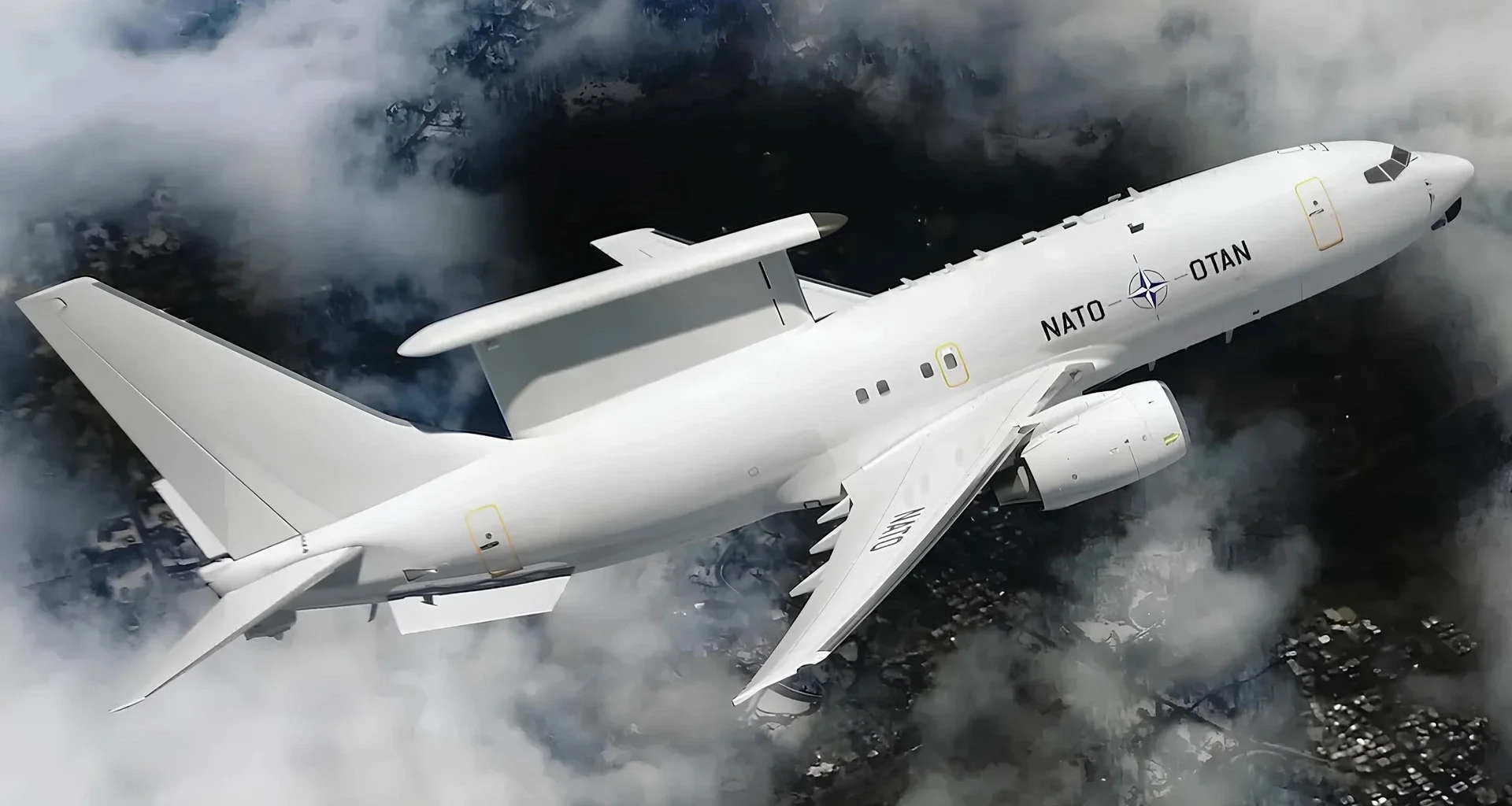BRUSSELS- NATO members have canceled plans to acquire the Boeing E-7A Wedgetail, affecting operations at Geilenkirchen Air Base (GKE), which hosts the alliance’s aging E-3A AWACS fleet.
The decision follows the United States’ withdrawal from the program and shifts in the strategic, financial, and industrial priorities of partner nations.
The Dutch Ministry of Defense in Amsterdam confirmed that participating countries will no longer pursue the planned purchase of six E-7 aircraft.
This change coincides with South Korea rejecting the E-7 for its own AEW&C needs, widening opportunities for alternative platforms.
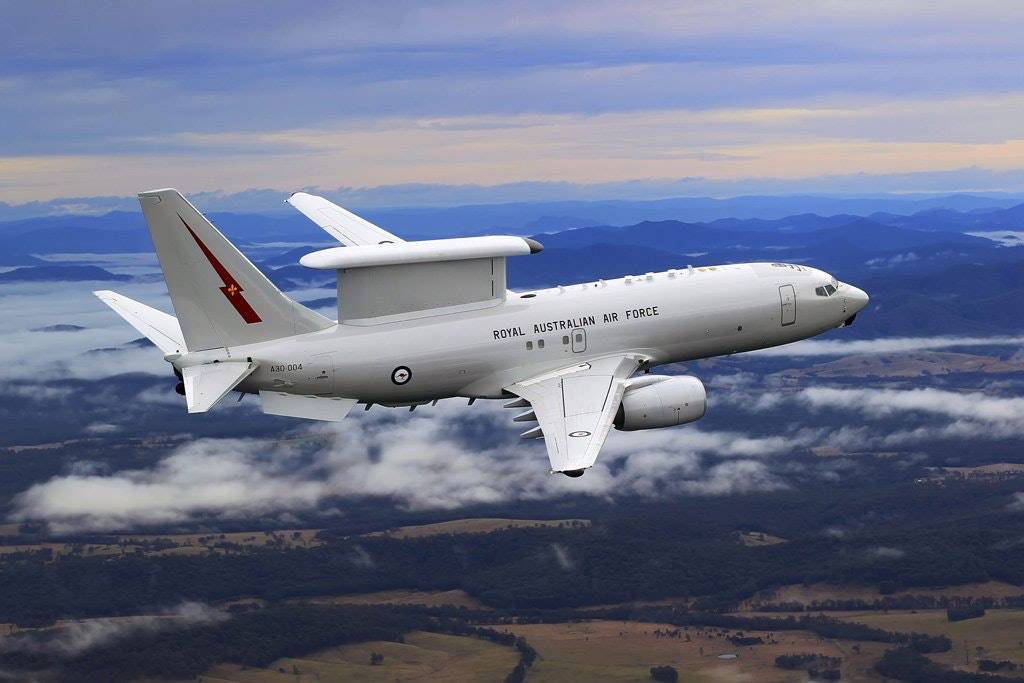 Boeing E-7 Wedgetail; Photo- Wikipedia
Boeing E-7 Wedgetail; Photo- Wikipedia
NATO Drops Boeing E-7A Wedgetail Plan
The Netherlands stated that it, together with several partner nations, decided to halt the Boeing E-7A procurement due to the loss of a viable strategic and financial basis.
The US exit in July triggered major adjustments and forced the remaining members to reconsider the program’s viability.
The original AWACS replacement group consisted of seven nations: the Netherlands, Belgium, Germany, Luxembourg, Norway, Romania, and the United States. With the US gone, the “remaining countries” are now looking for new partners.
At the time of its selection, NATO had identified the E-7 as the only known platform capable of meeting essential performance requirements within the required timeframe.
This selection followed a rigorous assessment process that included requests for information (RFI), price and availability (P&A) reviews, and studies of earlier E-7 acquisition programs in Australia, South Korea, Turkey, the United Kingdom, and the United States.
The E-7 had been positioned as a critical initial element of the Initial Alliance Future Surveillance and Control (iAFSC) effort.
Dutch State Secretary for Defense Gijs Tuinman stressed the need to replace the E-3A fleet before its 2035 retirement due to aging airframes, reduced availability, and long-standing noise concerns.
With the E-7 no longer viable, attention has shifted toward Saab’s GlobalEye, which France and Sweden already plan to operate.
According to TWZ, Saab noted growing global interest in GlobalEye, citing demand for long-range detection and identification capabilities across air, sea, and land.
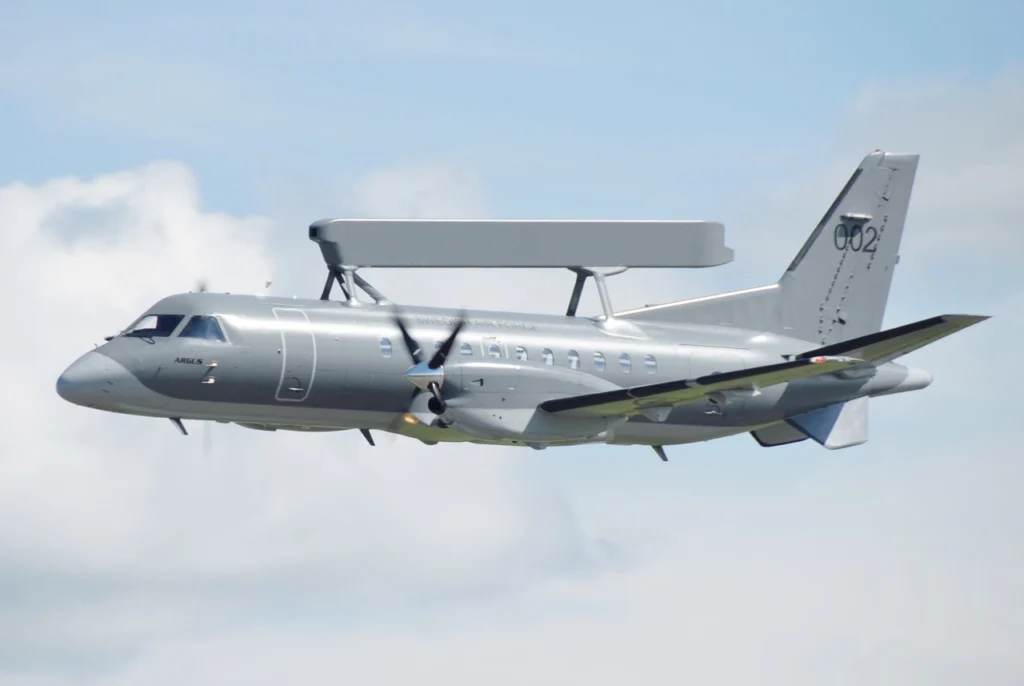 Photo: By Gnolam – Own work, CC BY-SA 3.0, https://commons.wikimedia.org/w/index.php?curid=12073110
Photo: By Gnolam – Own work, CC BY-SA 3.0, https://commons.wikimedia.org/w/index.php?curid=12073110
European Preference Strengthens
The US withdrawal reinforced calls to prioritize European industrial capabilities. Saab’s GlobalEye, based on the Bombardier Global 6000/6500 long-range bizjet airframe, now stands as the only realistic crewed AEW&C option deliverable within NATO’s schedule.
Its efficient design, low noise profile, and modern radar performance align with NATO’s operational needs.
France signed a declaration of intent with Saab for two aircraft and options for two more. Sweden ordered two units with two options as a new NATO member.
Saab also proposed cooperative operations for Denmark and Finland, making GlobalEye a strong European-led solution.
Saab’s CEO Micael Johansson previously stated that the aircraft would allow France to maintain full sovereign control over its airborne early warning capability.
 Pgoto: United States Armed Forces
Pgoto: United States Armed Forces
NATO’s Future Surveillance Network
NATO originally planned the E-7 as one component of a broader AFSC “system of systems” surveillance architecture.
A NATO graphic illustrated the Wedgetail within an integrated network that includes uncrewed aerial systems such as the RQ-4D Phoenix drone, maritime ISR platforms, land-based radar systems, MILSATCOM, a digital backbone, and a combat cloud.
One section of the graphic was intentionally left open, indicating room for future technologies.
This broader vision aligns with the United States Air Force’s plans to transition toward distributed space-based radar constellations for persistent global surveillance.
These networks promise improved resilience, reduced vulnerability, and faster reconstitution if satellites are lost.
As these concepts advance, NATO may choose a blended surveillance approach instead of relying solely on a crewed AEW&C platform.
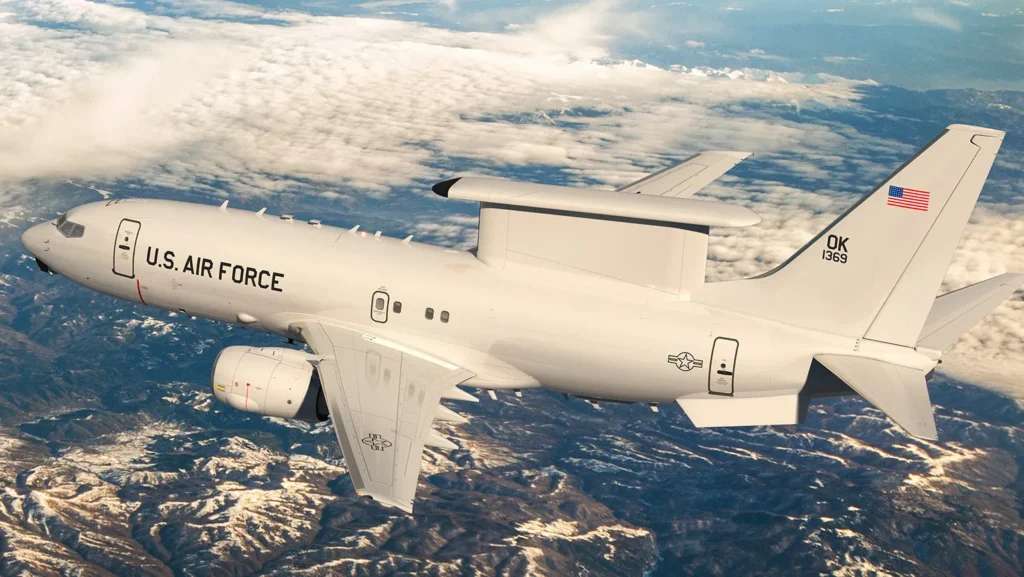 USAF Boeing E-7 Wedgetail (Artist Depiction); Photo- Wikipedia
USAF Boeing E-7 Wedgetail (Artist Depiction); Photo- Wikipedia
US Strategy And Wedgetail’s Uncertain Role
The US Air Force originally viewed the E-7 as a bridge between retiring E-3s and future space-based surveillance systems.
However, the Pentagon’s fiscal 2026 budget proposal recommended canceling the Wedgetail procurement entirely in favor of advanced moving target indication capabilities from space. The Northrop Grumman E-2D Hawkeye briefly emerged as a possible interim substitute.
After the recent end of the US federal funding pause, appropriators approved nearly $200 million to continue E-7 research, development, test, and evaluation.
This funding helps sustain prototyping activities, supplemented by remaining fiscal 2025 procurement funds redirected to RDT&E. Despite this, the US direction remains fluid, affecting NATO’s confidence in the platform.
The United Kingdom’s ongoing E-7 program has also experienced cost overruns, delays, and a reduction from five planned aircraft to only three, further complicating NATO’s previous reliance on E-7.
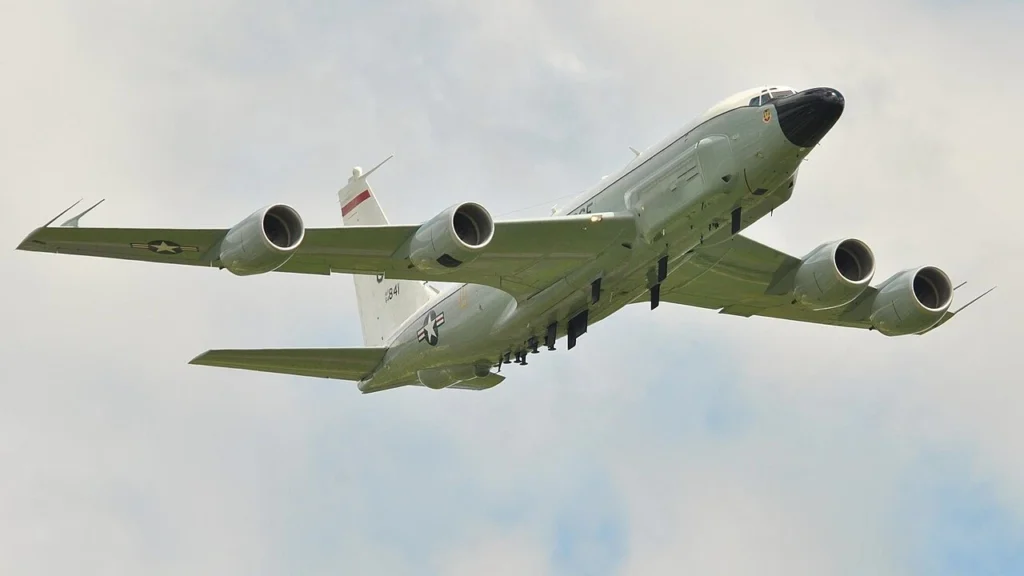 Photo: John5199 | Wikimedia Commons
Photo: John5199 | Wikimedia Commons
https://commons.wikimedia.org/wiki/File:USAF_-_RC-135_Rivet_Joint_-_Waddington_Airshow_2012_(7495898258).jpg
Operational Challenges
Concerns over survivability in high-threat environments influence NATO’s reassessment. Crewed AEW&C aircraft face increasing risk from long-range air defenses and advanced missiles.
However, they continue to provide unmatched look-down capability against drones and cruise missiles, which remain critical for Europe’s security environment.
Rising threats from Russian drones have increased demand for airborne surveillance across NATO’s eastern flank. Poland recently secured two Saab 340 Erieye aircraft, and Ukraine is expected to receive similar platforms.
These assets provide essential airspace monitoring and situational awareness for regional defense.
 Photo: By Senior Airman Roslyn Ward – usaf.mil, Public Domain, https://commons.wikimedia.org/w/index.php?curid=127132264
Photo: By Senior Airman Roslyn Ward – usaf.mil, Public Domain, https://commons.wikimedia.org/w/index.php?curid=127132264
NATO Prepares for Post-E-3 Reality
NATO Secretary General Jens Stoltenberg previously emphasized that joint procurement of high-end capabilities strengthens collective defense.
But with E-3 aircraft nearing the end of their service life and availability projected to degrade further through 2035, the alliance must urgently finalize its path forward.
While NATO has not ruled out a fully uncrewed or hybrid solution, the timeline strongly favors selecting a crewed AEW&C aircraft to avoid capability gaps.
At present, Saab’s GlobalEye appears positioned to play a leading role should NATO pursue a replacement platform.
Stay tuned with us. Further, follow us on social media for the latest updates.
Join us on Telegram Group for the Latest Aviation Updates. Subsequently, follow us on Google News
